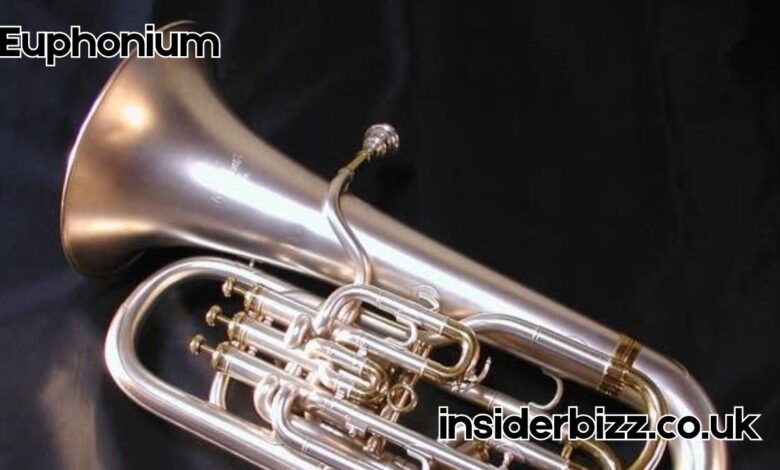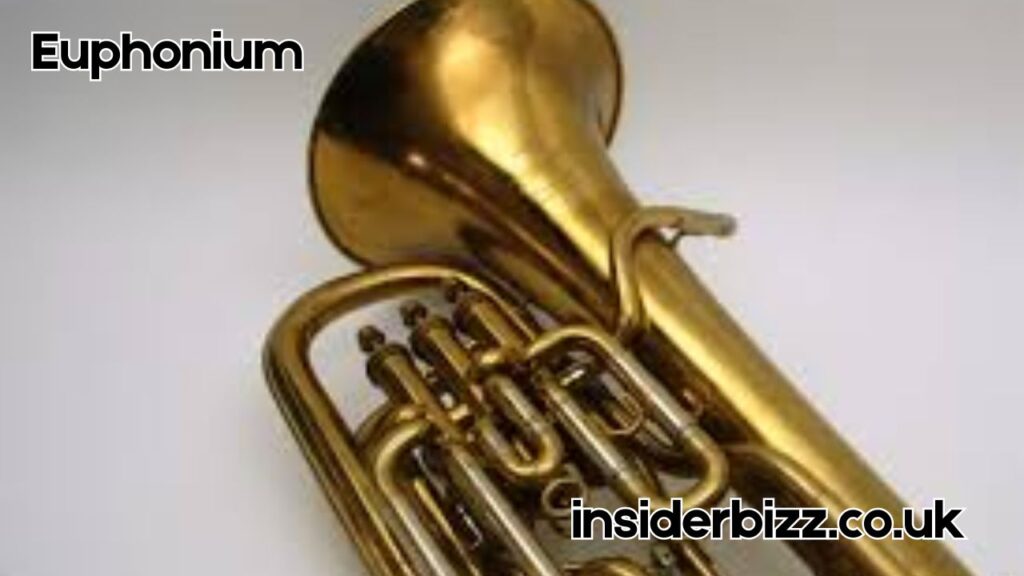
The Euphonium: The Warm Voice of the Brass Family
Introduction to the Euphonium
The euphonium is a beautiful and often underrated member of the brass family. Known for its mellow, warm tone, the euphonium bridges the gap between the tenor and bass voices in wind and brass ensembles. Whether in a marching band, concert band, or brass ensemble, the euphonium plays a crucial role in creating a rich, full-bodied sound.
History and Evolution of the Euphonium

The origins of the euphonium trace back to the 19th century, with its development rooted in the growing popularity of brass instruments during that time. It evolved from earlier instruments like the serpent and the ophicleide and was officially recognized in the mid-1800s.
Invented in Germany, the euphonium was initially embraced by military and concert bands across Europe. Over time, it gained recognition for its deep, expressive tone and became a staple in modern brass arrangements.
Structure and Design
At first glance, the euphonium resembles a small tuba. It features a conical bore, which means the tubing gradually widens from the mouthpiece to the bell. This design gives the euphonium its signature smooth tone.
Most euphoniums have three or four piston valves, although professional models may use compensating systems for better tuning accuracy. The bell can face upwards (concert style) or forward (marching style), depending on the intended use.
Sound Characteristics
The euphonium is known for its warm, rich, and lyrical sound. It blends seamlessly with other instruments, making it an ideal middle voice in ensembles. When played with finesse, the euphonium can mimic the singing quality of a human voice, making it perfect for solos and melodic lines.
Its range typically spans from B♭1 to about B♭4, but skilled players often extend beyond that. The euphonium can shift between powerful projection and subtle, emotional phrasing with ease.
Role in Bands and Orchestras
While the euphonium is rarely found in traditional orchestras, it plays a central role in concert bands, brass bands, and military bands. It often carries melodic lines or rich harmonies, complementing other instruments like the trombone or tuba.
In British-style brass bands, the euphonium is especially valued for its solo capabilities and is often given the most expressive, lyrical parts.
Famous Euphonium Players
The euphonium has produced several renowned performers, including:
- Steven Mead – A British virtuoso known for pushing the technical boundaries of the instrument.
- Brian Bowman – An American legend credited with elevating the euphonium’s presence in academic and performance settings.
- David Childs – A dynamic soloist who continues to perform globally with major ensembles.
These artists have helped bring the euphonium to the spotlight, proving its potential as a solo and ensemble instrument.
The Euphonium in Modern Music
Although traditionally associated with classical and military music, the euphonium has found its way into contemporary genres. Some composers incorporate it into jazz and experimental music, exploring new tonal possibilities. Its expressive range allows it to adapt well outside its usual context.
Modern composers and arrangers are recognizing the euphonium’s unique qualities and are creating works that highlight its lyrical and technical strengths.
Learning to Play the Euphonium

Many musicians begin learning the euphonium during school band programs. It’s often recommended for students who transition from other brass instruments, such as trumpet or trombone. The euphonium is accessible for beginners due to its manageable size and comfortable playing posture.
A proper embouchure, breath control, and finger dexterity are essential for mastering the euphonium. With regular practice, players can achieve a rich tone and advanced technical skills.
Choosing the Right Euphonium
When selecting a euphonium, consider the following:
- Level: Beginner, intermediate, or professional
- Valves: 3-valve vs. 4-valve systems
- Finish: Lacquer or silver-plated
- Brand: Yamaha, Besson, Jupiter, and Adams are reputable manufacturers
Your choice should depend on your experience, budget, and performance needs. A well-maintained euphonium can last for decades and provide consistent performance.
The Future of the Euphonium
With the rise of digital music education and social media platforms, the euphonium is reaching broader audiences than ever before. Online performances, tutorials, and competitions have introduced the instrument to a new generation of musicians.
As composers continue to write innovative music for the euphonium, and as performers push its boundaries, the instrument’s future looks bright. Its unique voice will continue to resonate in both traditional and modern musical landscapes.
Also Read: Exploring Primerem: A Modern Approach to Real Estate and Mortgage Solutions



